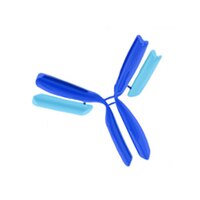CP18 Sigma-AldrichAnti-Collagen Type II (Ab-1) Mouse mAb (II-4C11)
This Anti-Collagen Type II (Ab-1) Mouse mAb (II-4C11) is validated for use in Frozen Sections for the detection of Collagen Type II (Ab-1).
More>> This Anti-Collagen Type II (Ab-1) Mouse mAb (II-4C11) is validated for use in Frozen Sections for the detection of Collagen Type II (Ab-1). Less<<Empfohlene Produkte
Übersicht
| Replacement Information |
|---|
Key Spec Table
| Species Reactivity | Host | Antibody Type |
|---|---|---|
| B, H, Rb, R | M | Monoclonal Antibody |
Preis & Verfügbarkeit
| Bestellnummer | Verfügbarkeit | Verpackung | St./Pkg. | Preis | Menge | |
|---|---|---|---|---|---|---|
| CP18-100UG |
|
Kunststoffbeutel | 100 μg |
|
— |
| Product Information | |
|---|---|
| Declaration | Manufactured by Daiichi Fine Chemical Co., Ltd. Not available for sale in Japan. |
| Form | Liquid |
| Formulation | In 100 mM sodium phosphate buffer, 0.1% BSA, pH 7.0. |
| Preservative | ≤0.1% sodium azide |
| Quality Level | MQ100 |
| Physicochemical Information |
|---|
| Dimensions |
|---|
| Materials Information |
|---|
| Toxicological Information |
|---|
| Safety Information according to GHS |
|---|
| Safety Information |
|---|
| Product Usage Statements |
|---|
| Packaging Information |
|---|
| Transport Information |
|---|
| Supplemental Information |
|---|
| Specifications |
|---|
| Global Trade Item Number | |
|---|---|
| Bestellnummer | GTIN |
| CP18-100UG | 04055977220957 |
Documentation
Anti-Collagen Type II (Ab-1) Mouse mAb (II-4C11) SDB
| Titel |
|---|
Anti-Collagen Type II (Ab-1) Mouse mAb (II-4C11) Analysenzertifikate
| Titel | Chargennummer |
|---|---|
| CP18 |
Literatur
| Übersicht |
|---|
| Kumagai, J. et al. 1994 J. Anat. 185, 278. Kivrikko, K,I. 1993 Ann. Med. 25, 113. Sandell, L.J., et al. 1991 J. Cell. Biol. 114, 1307. Ryan, M.C., and Sandell, L.J. 1990 J. Biol. Chem. 265, 10334. Mayne, R., and Burgeson, R.E. 1987 Structure and Function of Collagen Types,Academic Press, Orlando, FL |







